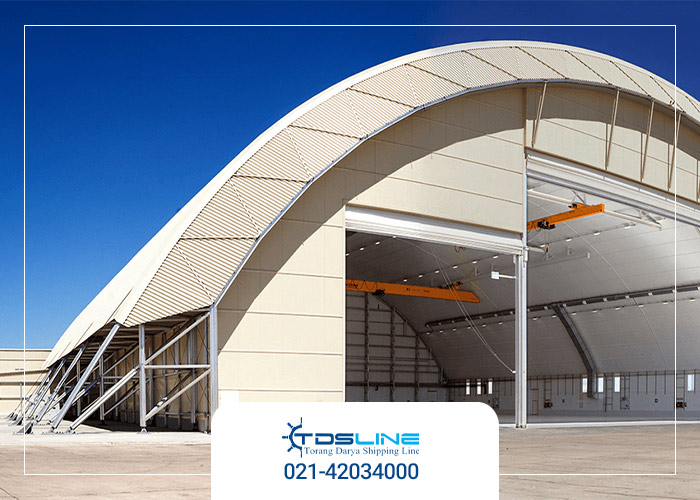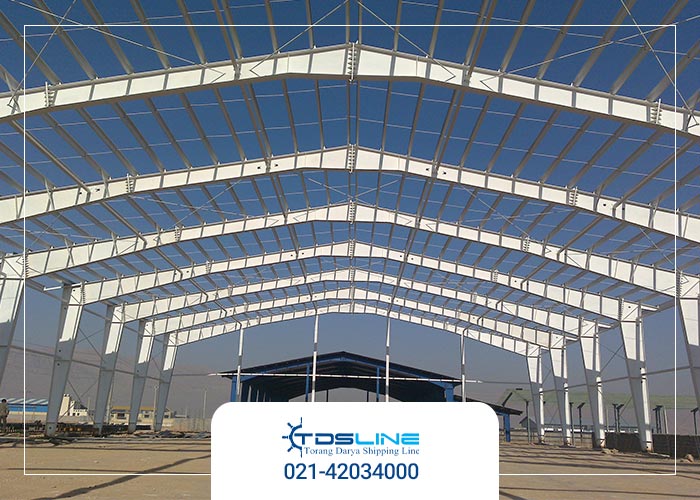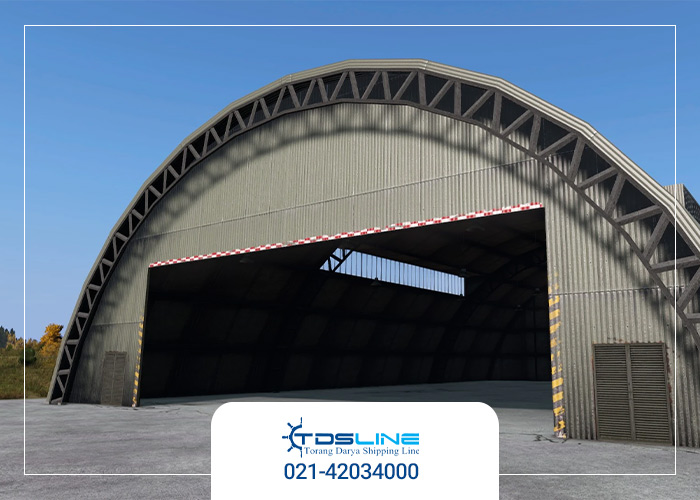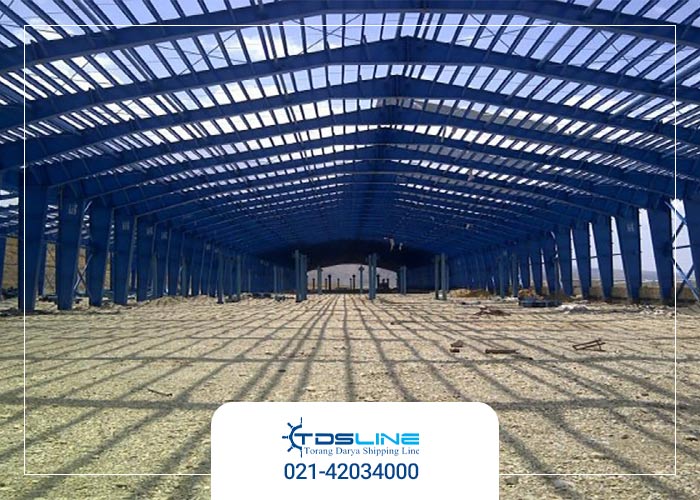Hangar or covered warehouse
These warehouses, or hangars, have a roof but are open on all four sides and lack side walls or protective barriers. These types of warehouses protect goods from rain, snow, and direct sunlight. Additionally, unloading and loading goods in hangars, which do not have side walls, is easier.
"Torang Darya Shipping Company is capable of providing warehousing services in warehouse areas, open spaces, and covered hangars."

What is a Hangar?
hangar is a metal structure, typically with a frame made of iron, and its roof is covered with sandwich panels or metal sheets. The difference between a hangar and a warehouse (suleh) is that a warehouse has concrete or brick walls, while a hangar is usually open on the sides and does not have walls.
- Construction Plan of a Hangar
- Reasons for Using a Hangar
- Role of Warehouses and Hangars in Customs Areas
In the past, hangars were also built with wooden structures, but today almost all hangars are constructed with metal sheet or sandwich panel roofing and metal columns for the walls, without brick or concrete walls and side barriers. The metal structure of a hangar is originally related to an aircraft hangar. In Iran, the term hangar is used differently in trade, referring to covered warehouses with open sides
hangar is commonly used in customs for goods that can be damaged by rain, snow, or direct sunlight. Additionally, unloading and loading goods in warehouses that lack side walls is easier, and the construction cost of this type of warehouse is also lower.
All imported or exported goods that are waiting for the relevant customs procedures are initially handed over to customs. After the procedures are completed and the goods have passed through the specified process, they are released to the owner for use or to the carrier for transportation. During this time, the goods are stored by customs in warehouses and hangars.
Torang Darya Shipping Company is capable of providing warehousing and hangar services in public customs warehouses.

Types of Warehouses and Hangars
Warehouses and hangars come in various types based on different factors. In terms of ownership, customs warehouses are divided into two categories: public warehouses and private warehouses.:

Cost of Warehouses and Hangars
The amount and rate of warehouse and hangar costs at land and air customs are determined by the approval of the government board. In ports, these costs are set by the Supreme Port Council, based on the powers delegated to them by this council.

Exit of Goods from Warehouses and Hangars
The exit of goods from warehouses and hangars is contingent upon the completion of the full customs clearance process for imports or exports and the final determination of duties, taxes, ..., for the goods. Goods owners cannot gradually remove their goods from these warehouses and hangars. Therefore, considering this explanation, using these warehouses and hangars may not be cost-effective for manufacturers who have private warehouses.
Frequently Asked Questions
The number of hangars in land customs is higher compared to port customs, as ports prefer to use warehouse halls and open spaces.
Warehouses and hangars are among the most important customs facilities.
A hangar refers to a covered warehouse without walls or barriers, whereas a warehouse hall (suleh) has a roof and is equipped with brick or concrete walls.
Hangars in Customs
Hangars are typically used in customs for goods that could be damaged by rain, snow, or direct sunlight. Additionally, unloading and loading goods in warehouses that lack side walls is easier.
Conclusion
A hangar has a roof but is open on all four sides and lacks side barriers, while a warehouse hall refers to a building with a roof and brick or concrete walls. A hangar or warehouse protects goods from rain, snow, and direct sunlight. Additionally, unloading and loading goods in hangars, which lack side walls, is easier. Hangars or warehouses are among the
Torang Darya Shipping Company provides warehousing services in warehouse halls, open spaces, and covered hangar areas."021-42034000








